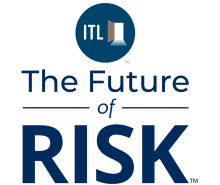Artificial intelligence isn't settling for a foot in the door in 2025 – it wants to bust doors down for full commercial use, particularly with insurance companies.
A recent study by Digital Insurance shows 78% of insurance leaders saying they're expanding their technology budgets in 2025, and 36% of survey respondents said the bulk of their IT budgets are going to AI. That makes AI the highest IT priority among insurers, well ahead of top-tier issues like big data and analytics, cloud computing, and digital infrastructure.
"AI is now central to how insurers operate, affecting underwriting, claims, customer experience, and fraud detection," said Guy Gresham, a global capital markets board advisor and former director of investor relations at BNY.
Most insurers are in the speculative and development stage with AI, the DI study reports, but in specific insurance sectors like healthcare, "are already in full AI production."
So, what does the AI-led insurance innovation landscape look like in mid-2025? Here's an inside look.
How AI Is Changing the Insurance Landscape.
In mid-2025, the U.S. insurance sector is seeing AI fuel the rise of continuous underwriting, where pricing and risk exposure adjust dynamically rather than on an annual cycle.
"At the same time, intelligent agents are transforming service delivery by handling claims and customer interactions with increasing sophistication," Gresham said. "For insurers, this marks a shift from being product providers to becoming real-time risk managers. For investors, the value lies in firms that can embed AI across functions to drive efficiency, resilience, and scalable insights."
With those factors in play, major insurance companies have wasted no time in leveraging AI.
Allstate, for example, is helping agents prepare claim emails, while State Farm is deploying the technology to swiftly gather data on customers for improved outreach and is using natural language models to speed the contract analysis process.
Other insurance professionals say they're quickly getting comfortable with AI in the workplace.
"We're using AI to streamline underwriting, flag fraud faster and offer customer service that doesn't include canned elevator music," said John Espenschied, agency principal at Insurance Brokers Group, an independent agency.
Espenschied said predictive analytics is the "new" gut instinct. "AI can look at more variables than any underwriter, making quote accuracy better, pricing fairer (most of the time), and claim turnaround faster," he said. "Claims bots are getting so good they might start asking how your weekend was before denying coverage."
Is AI affecting policies and pricing?
AI is also helping insurers clarify risk and set up optimized price points.
"Live telemetry gives insurers a clearer view of actual risk, not theoretical posture," Espenschied noted. "That clarity lets good actors get better pricing. It also helps advisors push for coverage that aligns with what clients are actually doing, not just what they say on an application."
On the production side, insurers are using AI to develop new guidelines for operational risk assessment, which in turn affects pricing.
"Insurers today typically rely on broad data sets like historical loss data, demographic information, and general weather reports to assess risk," said Stan Smith, CEO and founder of Gradient AI, a fintech insurance company. "In the future, we will see AI models that incorporate more specialized data sources to improve the accuracy of risk assessments.
Cryptocurrencies and blockchain are being deployed.
Blockchain is no longer a peripheral experiment for insurers. Now, it's evolving into a core infrastructure technology with broad applications across the insurance value chain. From underwriting and claims to reinsurance and regulatory compliance, blockchain delivers transparency, automation, and data integrity on a large scale.
Take AXA, the France-based insurance and investment firm that's been challenged by a common roadblock in the insurance sector: lengthy and delay-prone claims processes related to airline flight delays. In response, AXA created Fizzy, a blockchain-based parametric insurance that delivers automated payouts to travelers on flights delayed by two hours, with no need for the traveler to file a claim.
"Blockchain in insurance has promise," Espenschied said. "Smart contracts are the big draw, especially automatic payouts when conditions are met," like weather parametrics.
There's also a growing industry concern that over the next 15 years, insurance may shift in part to a tokenized system where risk pools are moved and manipulated.
"That's where insurance coverage is tied to how many tokens within that pool have been staked," said Ted Patestos, CEO and founder of Tiger Adjusters. "Nexus Mutual is one example of a company playing in the DeFi insurance space."
Experts also note that alternative finance technologies have ample room for expansion and market share growth. "Blockchain for the first time has joined forces with the reinsurance sector to bring sufficient liquidity to the asset class, and a whole new avenue for alternative capital to enter the industry," said Ted Georgas, co-founder and chief technology officer at OnRe, a blockchain insurance company.
Backers argue that the tokenization approach democratizes access to insurance investments, accelerates capital inflows, and enhances product liquidity, particularly in catastrophe risk markets.
Fintech companies, such as Chainlink Labs, which developd the Chainlink network, a decentralized oracle network connecting blockchains to real-world data and off-chain systems, are collaborating with insurers to integrate real-world data feeds into decentralized insurance products, particularly in emerging markets.
"Regulatory risk is the biggest roadblock for insurance shifting to blockchain-based automated solutions, followed closely by the 'what if this token is worth eight cents tomorrow?' factor," Espenschied said.
What will AI-powered insurance look like in 10 years?
Insurance industry specialists anticipate significant technological shifts that will transform the insurance sector over the next decade.
"Risk will be priced in real time," Knuth said. "Protection will be embedded, not bolted on. And advisors will act more like financial strategists, guiding clients through risk exposure with dashboards, not paper apps."
More automation, however, may lead to more industry upheaval.
"We'll see deeper exclusions in policies, less human interaction, longer wait times to see true resolution or indemnification on claims," Patestos said. "We'll also see more 'Band-Aid models' from smaller insurance companies attempting to capitalize on the vacuum in the market from larger carriers with a lower risk appetite pulling out of certain markets."








